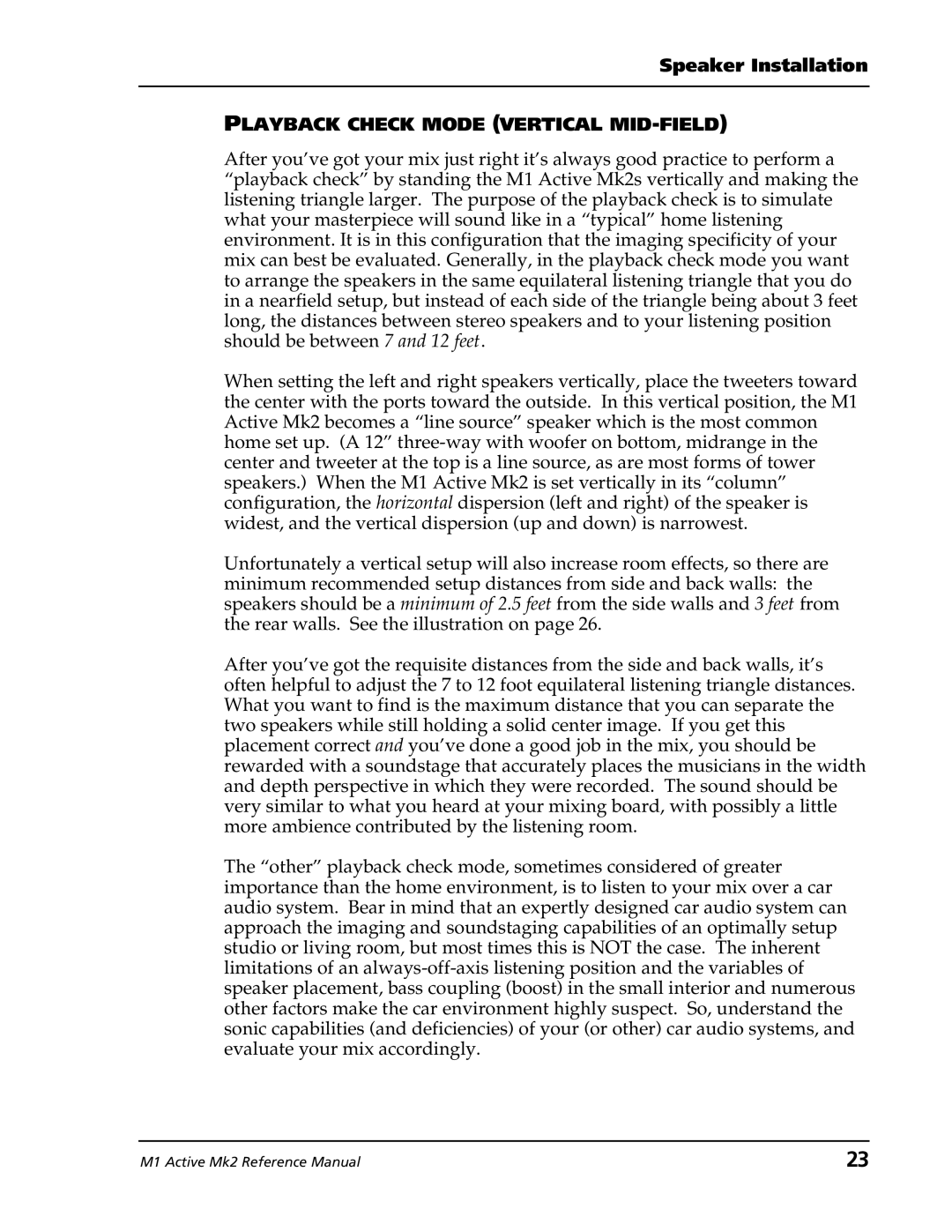M1 Active Mk2 specifications
The Alesis M1 Active Mk2 is a well-regarded studio monitor designed for musicians, producers, and audio engineers seeking high-quality sound reproduction at an accessible price point. With a focus on delivering accurate sound and a balanced performance, the M1 Active Mk2 has become a popular choice for both home studios and professional environments.One of the standout features of the M1 Active Mk2 is its bi-amplified design. Each speaker is powered by dedicated amplifiers that optimize the performance of the woofer and tweeter separately. This bi-amplification ensures clear and precise sound reproduction across the frequency spectrum. The 6.5-inch low-frequency driver is designed to deliver robust bass response while the 1-inch silk dome tweeter provides smooth high-frequency performance, resulting in a well-rounded audio experience.
The M1 Active Mk2 incorporates advanced technologies to enhance its performance. The monitor features a front-firing bass port that helps to minimize boundary coupling and improves the overall bass response, allowing for placement flexibility within the studio. This design reduces the risk of unwanted resonances caused by proximity to walls, ensuring accurate sound even in challenging acoustic environments.
Another important characteristic of the M1 Active Mk2 is its frequency response, which ranges from 55 Hz to 20 kHz. This wide frequency range makes it suitable for various musical genres and audio applications, enabling users to hear detailed nuances in their mixes. Additionally, the monitor is equipped with a rear-mounted EQ control, allowing users to tailor the sound to their specific acoustic space, mitigating the effects of room acoustics on playback.
Durability and design are also key aspects of the M1 Active Mk2. Its rugged enclosure is built to withstand the rigors of studio use while also providing a sleek and professional appearance. The monitors can be easily positioned on desktop surfaces or mounted on stands, making them versatile for different studio setups.
Overall, the Alesis M1 Active Mk2 stands out as a reliable and affordable option for anyone looking to improve their audio monitoring capabilities. With its bi-amplified design, advanced technologies, and customizable features, this studio monitor delivers impressive sound quality suitable for both amateur and professional recording applications. Whether mixing, mastering, or simply enjoying music, the M1 Active Mk2 is designed to deliver a true-to-source listening experience.

